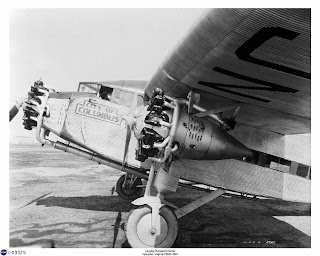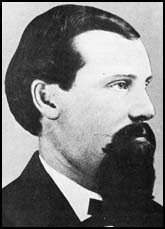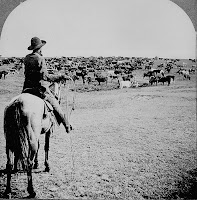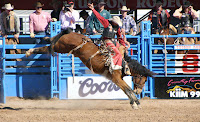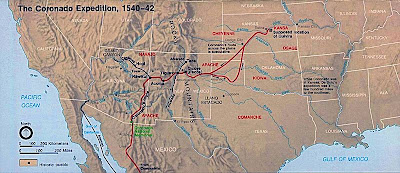 The time was World War Two. We heard about Rosie the Riveter, bell bottomed trousers and rationing. This was many decades ago and today some might ask...who was Rosie the Riveter? She was a symbol of Americans who labored in our factories to build the ships, planes and vehicles necessary to win the war.
The time was World War Two. We heard about Rosie the Riveter, bell bottomed trousers and rationing. This was many decades ago and today some might ask...who was Rosie the Riveter? She was a symbol of Americans who labored in our factories to build the ships, planes and vehicles necessary to win the war.The United States was in a conflict like never seen before. All of our resources were targeted to winning the war. When you aboard the Liberty Ship S.S. Jeremiah O'Brien you are stepping back into history. The 441 foot long S.S. Jeremiah O'Brien is now docked at San Francisco's Fishermans Wharf, one of the most popular tourist destinations in North America. This Liberty Ship was named after Captain Jeremiah O'Brien, a captain in the Massachusetts Navy and a participant in the American Revolutionary War.
The Liberty Ship
The S.S. Jeremiah O'Brien is one of only two still surviving Liberty Ships of the 2,700 which were produced during the war. The other surviving Liberty Ship is the S.S. John W. Brown which is home ported in Baltimore Maryland. The Brown was constructed in 56 days at the Bethlehem-Fairfield Shipyard in Baltimore. Liberty ships were arguably the most famous cargo ships of World War II. When World War Two broke out in Europe in 1949, the merchant marine fleet was inadequate to undertake a large sealift of war materials. As the Allies tried to recover from the large merchant marine losses at the hands of German submarines during the Battle of the Atlantic, the necessity to replace the cargo fleet losses and add even more vessels was paramount .The answer was the creation of Liberty Ships and sometimes referred to as Project Liberty.
They were a massed produced and a relatively inexpensive ship to build. Kaiser Industries which had never built a ship prior to the Liberty Ship program, built vessels in record time by having parts of the vessel built off site and then put together at a central location. For one thing this allowed work to be done on single parts that didn't require someone with prior shipbuilding knowledge. The average time to build a Liberty Ship was figured at about 50 days. As a publicity and morale story, the S.S. Robert E. Peary was built in an amazing four days at the Kaiser shipyard in Richmond, California. That 96 hour time was never repeated. Shipyards for the Liberty Ship effort were located in thirteen states. The ships were called Liberty Ships because the first one launched in 1941 was the SS Patrick Henry. As a side note, the Patrick Henry did survive World War 2 but was scrapped in 1960. Another interesting fact is that the Patrick Henry took over 240 days to build and with the average later reduced to 50 days or less, it illustrates how time saving devices were learned along the way.
 The majority of individual Liberty ships were assigned to the U.S. Merchant Marine service, and individual ships were usually named for famous and respected Americans. The Liberty ship had two decks running the entire length of the vessel, with seven watertight bulkheads rising to the upper deck allowing for five cargo holds.
The majority of individual Liberty ships were assigned to the U.S. Merchant Marine service, and individual ships were usually named for famous and respected Americans. The Liberty ship had two decks running the entire length of the vessel, with seven watertight bulkheads rising to the upper deck allowing for five cargo holds.Another great ship tour in the San Francisco Bay Area is the SS Red Oak Victory which is on permanent display at the old Kaiser shipyards in Point Richmond California.
Visit the Jeremiah O'Brien
Today, the ship is open to the public and is well worth the visit. The ship today is a living memorial to all who built, supplied and served on these Liberty Ships.There are several amazing facts about the O Brien. This ship was built in an incredible 56 days in South Portland Maine. An almost unbelievable short time to turn out a vessel of it's size. The O'Brien was launched on June 19, 1943 made seven voyages during World War Two. From July 1943 to October 1944 the O'Brien made four sailings between the U.S. and England. In addition to that, the S.S. Jeremiah O'Brien was a veteran of both the Atlantic and Pacific theaters of war.The O'Brien played a big part in D-Day which we all know was critical to winning the war in Europe.
The Liberty Ships were essential to our war effort. German U-Boats were sinking merchant vessels in the Atlantic. England was under siege and the Japanese were advancing in the Pacific theater. The need to be able to transport troops and supplies to the war zones including Great Britain which was chronically short of supplies because of the German U-Boat stranglehold was essential. You couldn't win the war without this capability. The Liberty Ships seemed to be the answer for transporting crucial supplies both of a military nature and of a humanitarian nature.
The crew of a Liberty Ship such as the Jeremiah O'Brien was made up of about 43 civilians. During the war years there was also a military guard unit assigned to the ships. The Jeremiah O'Brien was armed with machine guns but wasn't designed to be a fighting vessel. Escorts were quite necessary. If military supplies were carried, the military assigned a cargo officer to accompany the crew.
 When the war ended,the Jeremiah O'Brien joined the mothball fleet of spare vessels grouped on the Sacramento River just east of San Francisco Bay near Martinez California. Some of these spare ships were sold off to foreign nations. Others were refitted into commercial use and still others just stayed moored in the Sacramento River.
When the war ended,the Jeremiah O'Brien joined the mothball fleet of spare vessels grouped on the Sacramento River just east of San Francisco Bay near Martinez California. Some of these spare ships were sold off to foreign nations. Others were refitted into commercial use and still others just stayed moored in the Sacramento River.During the 1960's various civic groups decided to try and save at least one Liberty Ship for posterity and historical purposes so that future generations would be able to know of these ships and their part in world history. In 1978 the National Liberty Ship Memorial non-profit association was started . Their purpose was to raise funds to restore and maintain an unaltered Liberty Ship. The group decided to choose the S.S. Jeremiah O'Brien for their project. The O'Brien was in excellent condition and after much volunteer work and a good deal of money the O'Brien returned to service in 1979.
The O'Brien is now a living museum as well as a tribute to Rosie the Riveter moored at Fishermans Wharf in San Francisco California and is open for self-guided tours. I have been on the ship several times and I would highly recommend it for any family looking for a low cost way to take in fun and education at the same time.
The Jeremiah O'Brien also schedules several San Francisco Bay area day cruises during the year which is always a fun excursion and the proceeds help the association cover the costs of maintenance. The O'Brien is truly a gift for those wishing to explore the World War Two era. San Francisco Bay also features the excellent U.S.S. Hornet Museum which is located in Alameda in the east Bay area. The museum is actually the aircraft carrier itself and is another great San Francisco side trip to another era.
You can visit the S.S. Jeremiah O'Brien at Pier 45 at San Francisco's Fishermans Wharf. Hours are daily 9A-4P. Closed January 1st and Thanksgiving Day. For more information on the ship and for a schedule of events and sailings please see www.ssjeremiahobrien.org.
(Photos from author's private collection)









